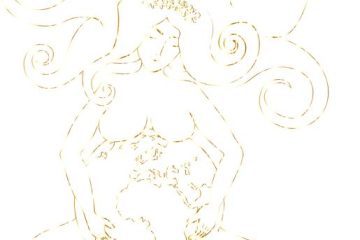In a world brimming with complexity and wonder, the Gaia hypothesis emerges as a beacon of interconnectedness and harmony. Simplifying this intriguing concept to its essence unveils a profound narrative of Earth as a living, breathing organism in its entirety. Join us on a journey as we unravel the simple yet profound definition of the Gaia hypothesis, shedding light on the intricate web of life that sustains our beloved planet.
Table of Contents
- – Unveiling the Gaia Hypothesis: A Simple Explanation
- – Exploring the Interconnectedness of Earth’s Systems
- – Practical Applications of the Gaia Hypothesis
- – Embracing Sustainable Practices through Gaia’s Wisdom
- Q&A
- Future Outlook

– Unveiling the Gaia Hypothesis: A Simple Explanation
The Gaia hypothesis, proposed by scientist James Lovelock in the 1970s, suggests that the Earth functions as a self-regulating system. Imagine our planet as a living organism, where all living and non-living components interact to maintain a stable environment conducive to life. This hypothesis challenges the traditional view of the Earth as a passive backdrop to life and highlights the interconnectedness of all elements on Earth.
In the Gaia hypothesis, Earth’s atmosphere, oceans, and landmasses work together in a complex system that regulates temperature, chemistry, and other environmental factors. This interconnectedness ensures that life can thrive on our planet. Think of it as a giant, self-sustaining ecosystem where each component plays a crucial role in maintaining the delicate balance necessary for life to exist. Embracing the Gaia hypothesis can inspire us to view Earth with a renewed sense of respect and appreciation for its intricate web of life.
– Exploring the Interconnectedness of Earth’s Systems
Have you ever pondered the intricate web of connections that bind our planet’s ecosystems together? The Gaia Hypothesis, proposed by James Lovelock, delves into the idea that Earth functions as a self-regulating organism where living organisms interact with the environment to maintain conditions suitable for life.
This fascinating theory suggests that the Earth’s atmosphere, oceans, and living organisms are interconnected and work harmoniously to create a balanced and stable environment. Imagine a delicate dance where each component plays a crucial role in sustaining life on our beautiful planet. From the vast oceans to the lush forests, every element is intertwined, showcasing the remarkable interconnectedness of Earth’s systems.
– Practical Applications of the Gaia Hypothesis
The Gaia Hypothesis, proposed by scientist James Lovelock, portrays the Earth as a self-regulating organism, where all living and non-living components interact to maintain optimal conditions for life. This intriguing concept has sparked various practical applications across different fields, showcasing the intricate balance and interconnectedness of our planet’s systems.
Environmental Sustainability: One practical application of the Gaia Hypothesis lies in shaping environmental policies and practices. By understanding the Earth as a unified entity, efforts to preserve biodiversity, reduce pollution, and combat climate change can be approached holistically. Implementing strategies that consider the delicate equilibrium of ecosystems can lead to more sustainable resource management and a healthier environment for future generations.
Biological Research: Scientists draw inspiration from the Gaia Hypothesis when studying ecosystems and biodiversity. By observing how different organisms interact within their environments, researchers gain insights into the complex web of life on Earth. This broader perspective aids in developing conservation strategies, understanding species coevolution, and discovering new ways to safeguard the delicate balance of nature.
– Embracing Sustainable Practices through Gaia’s Wisdom
In today’s interconnected world, the concept of embracing sustainable practices isn’t just a trend; it’s a way of life rooted in the wisdom of Gaia. By understanding and applying the principles of the Gaia hypothesis, we can strive towards a more harmonious relationship with our planet and all its inhabitants.
Key Points to Consider:
- Interconnectedness: Gaia’s wisdom teaches us that everything in nature is interconnected, emphasizing the delicate balance between all living beings.
- Respect for the Environment: By honoring Gaia, we acknowledge the importance of respecting and protecting the environment for future generations.
- Mindful Consumption: Adopting sustainable practices involves being mindful of our consumption habits and their impact on the Earth.
- Community Engagement: Engaging with our communities to promote sustainable initiatives strengthens our connection to Gaia and fosters a sense of collective responsibility.
Q&A
Q: What is the Gaia hypothesis in simple terms?
A: The Gaia hypothesis suggests that Earth is a self-regulating living organism where all living and non-living components interact to maintain the conditions necessary for life.
Q: Who proposed the Gaia hypothesis?
A: The Gaia hypothesis was first proposed by scientist James Lovelock and biologist Lynn Margulis in the 1970s.
Q: How does the Gaia hypothesis relate to environmentalism?
A: The Gaia hypothesis emphasizes the interconnectedness of all life forms and their environment, promoting a holistic approach to environmental issues and sustainability.
Q: Can you give an example of how the Gaia hypothesis works in nature?
A: One example of the Gaia hypothesis in action is the regulation of the Earth’s temperature through processes like the carbon cycle, which involves interactions between living organisms and the atmosphere to maintain a stable climate.
Q: How has the Gaia hypothesis influenced ecological thinking?
A: The Gaia hypothesis has influenced ecological thinking by highlighting the importance of viewing Earth as a single, interconnected system rather than individual components, leading to a deeper understanding of environmental processes and the importance of preserving biodiversity.
Future Outlook
As we journey through the realms of ecological thought, the Gaia Hypothesis stands out as a beacon of interconnectedness between our planet and all living beings. By delving into this simple yet profound concept, we unveil nature’s web of life and its intricate balance. Let us embrace the wisdom of Gaia and strive to harmonize with the Earth, for in doing so, we honor not only our home but also the universal dance of existence. May the essence of Gaia’s hypothesis inspire us to cherish and protect this precious blue jewel we call home. Remember, we are not mere observers but active participants in the symphony of Gaia’s grace. Let’s join hands in cultivating a future where humanity and nature coexist in harmony.



0 Comments